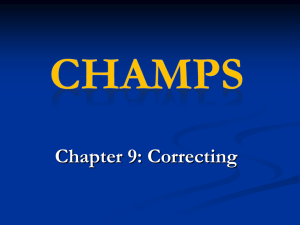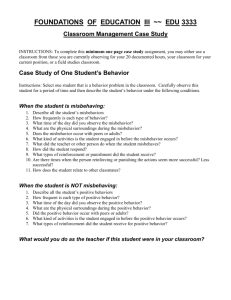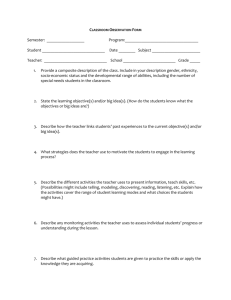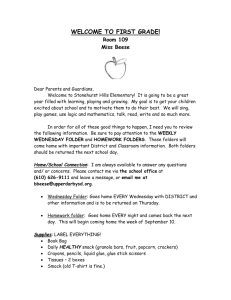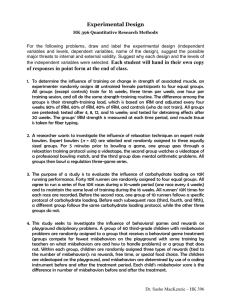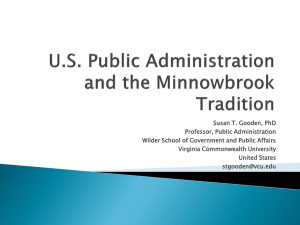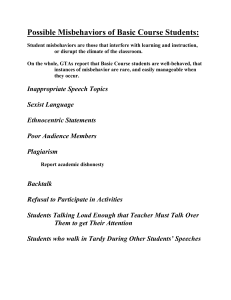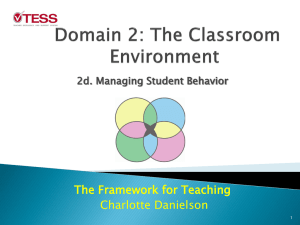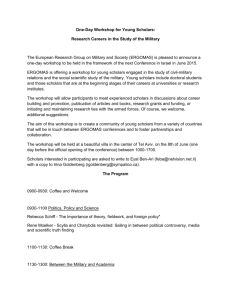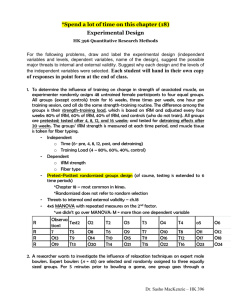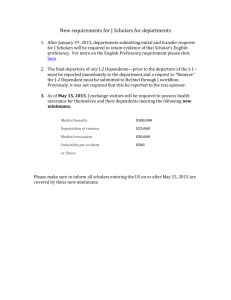Positive Framing NTT Session #1
advertisement
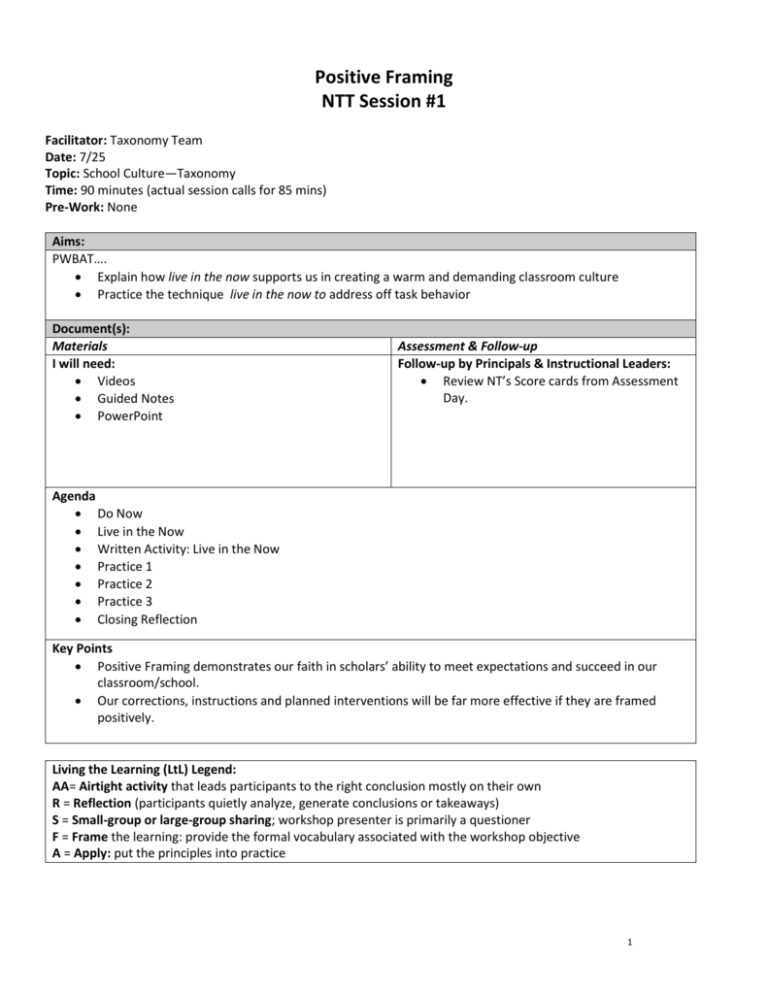
Positive Framing NTT Session #1 Facilitator: Taxonomy Team Date: 7/25 Topic: School Culture—Taxonomy Time: 90 minutes (actual session calls for 85 mins) Pre-Work: None Aims: PWBAT…. Explain how live in the now supports us in creating a warm and demanding classroom culture Practice the technique live in the now to address off task behavior Document(s): Materials I will need: Videos Guided Notes PowerPoint Assessment & Follow-up Follow-up by Principals & Instructional Leaders: Review NT’s Score cards from Assessment Day. Agenda Do Now Live in the Now Written Activity: Live in the Now Practice 1 Practice 2 Practice 3 Closing Reflection Key Points Positive Framing demonstrates our faith in scholars’ ability to meet expectations and succeed in our classroom/school. Our corrections, instructions and planned interventions will be far more effective if they are framed positively. Living the Learning (LtL) Legend: AA= Airtight activity that leads participants to the right conclusion mostly on their own R = Reflection (participants quietly analyze, generate conclusions or takeaways) S = Small-group or large-group sharing; workshop presenter is primarily a questioner F = Frame the learning: provide the formal vocabulary associated with the workshop objective A = Apply: put the principles into practice 1 Time 0:000:07 Min 7 Section Do Now (R): Look back on the portion of your pre-work last night where you read about positive framing. Pick one of the quotes or a concept that particularly resonated with you. Reflect on the following questions. • • • Why did you pick this quote/concept? Did it shift any pre-conceived notions or misunderstandings you had? What if anything did it confirm? Silent Individual Reflection (1 minute) Pair Share: (1 minute) Whole Group Share (3 minutes) Frame (2 minutes) Like you all shared, effective teachers are consistent in demonstrating their belief in scholars’ potential to address misbehavior. In a warm/demanding classroom positive framing is the key to creating an environment conducive to learning and one that encourages and acknowledges scholars. Today, we are going to think about and practice what that looks like in our classrooms. 0:070:09 2 Aims & Agenda (F) Today we’re going to practice supporting scholars in successfully meeting expectations through positive framing. Specifically in this session, we’ll talk about the live in the now technique. At the end of this session, you will be able to… Explain how live in the now supports us in creating a warm and demanding classroom culture Practice the technique live in the now to address off task behavior We will get there by… Do Now Live in the Now Written Activity: Live in the Now Practice 1 Practice 2 Practice 3 Closing Reflection 0:090:20 11 Live in the Now (AA) Video 1: Ms. Mead (entire video) o Vimeo: https://vimeo.com/99940243 Password: miri Video 2: Ms. Bronson (entire video) o Vimeo: https://vimeo.com/99940244 Password: miri 2 Let’s go into two teachers classrooms and watch how they address misbehaviors. We’ll pause for a moment between each video to allow you reflection time. Before we watch the videos, a few important notes: 1) In redirecting misbehavior your schools have developed school based systems. You won’t see these systems reflected in the videos or the practice. Some of the misbehaviors that you see in the videos would constitute a deduction or an infraction in your school’s behavior management system. 2) You will also see teachers using a mix of public and private interventions. The volume level you use to address misbehavior will depend on: 1) the number of students that are off task, 2) the point in the lesson, 3) if the infraction is a teachable moment, 4) the personality and temperament of the student. As you watch, reflect on these questions: How does Ms. Mead effectively address misbehavior? What does she say and do? o Tells scholar what she must do to fix the behavior (put her pencil down when teacher is talking) o Does it privately o Sets the expectation without consequence o Says it in an even tone How does Ms. Bronson effectively address misbehavior? What does she say and do? o Pauses/self-interrupts o Raises her eyebrows o Tells scholars what she must do to fix the behavior (Show me SLANT and track me) What impact do you believe this will have on their students? o Interactions remain positive o Scholars know exactly what they need to do in order to address their off-task behavior Individual Reflection (1 minute) Pair Share: (1 minutes) Whole Group Share (3 minutes) Frame (4 minutes): Just as you pulled out of those videos, these teachers were clearly telling scholars what they needed to do to address off-task behavior. The teachers focused their corrective interactions on the things students needed to do to succeed from this point forward. This allowed for the lesson to continue with minimal interruption and the scholars were able to get back to work successfully. As you read last night, these teachers were using a technique called live in the now. When you live in the now you….. Are forward focused: You focus scholar on immediate actions that will lead to their success. You do not ask rhetorical questions, say that you will wait, or say what went wrong. Employ economy of language: You eliminate unnecessary words. Use a neutral tone: Deliver the statement in a neutral, emotionally-constant tone. Respond without tension in your voice. Allow Plausible Anonymity: When possible address the students without using their name. 3 Keep the Pace: Jump right back in so you can keep pace of the lesson. You say things like, “Track me,” instead of “Troy, stop looking out the window.” This may seem like an unnecessary skill but it is not easy to do, especially in the moment, and that’s why we are practicing this skill today. It is a lot easier to say “Do not….” Or “Stop…” as opposed to the behavior you want to see in your classroom. In a classroom where a teacher has honed their skill to live in the now, they are able to support scholars and support their success. 0:200:31 11 Let’s begin to build our skill in effectively using live in the now. Written Activity: Live in the Now (A) As we prepare for our practice, we wanted to give everyone the opportunity to reframe and rewrite common misbehaviors we experience in our classrooms. We want to build this muscle so that it becomes automatic for you to think in the positive as opposed in the negative when you see misbehavior. Written Activity Directions: Rewrite the statements below; reframe key phrases using live in the now technique. 0:310:59 28 Whole Group Example of question 1 (2 minute) Independent Work Time (5 minutes) o Circulate to see if people have any common misconceptions and surface them. Pair Compare (2 minutes) Group Compare (2 minutes) o Write out the responses because they will use them in the upcoming practice. Practice 1 Now we are going to practice the live in the now technique and do 3 practice rounds with increased levels of complexity. Context: You are in groups of 4. Notes for Facilitator: First two rounds could be shorter if you are running low on time. You also could benefit from more time in the Positive Framing 2 session. You should message to your groups that they should continue to rotate until time is called. Round Protocol Round 1 ( 1 min per teacher x 4 teachers x 3 rounds =12 minutes): Teacher responds to the common misbehaviors with live in the now statements. Students sit in a line and execute the following misbehaviors in order. The new misbehavior doesn’t begin until the behavior has been addressed. You will go through the line twice and each student will do two misbehaviors. o Student 1: Tap your pencil o Student 2: Minor slouching o Student 3: Look out the window. o Student 1: Not tracking. 4 o Student 2: Kicking the chair. o Student 3: Distracted by pencil and paper Rotate until time is called. Round 2 (1 min per teacher x 4 teachers x 3 rounds =12 minutes): Teacher responds to the common misbehaviors with live in the now statements Students sit in a line and execute the misbehaviors as written in the matrix. Rotate until time is called Model the first round-(2 minutes) Practice (12 minutes) Model the second round (2 minutes) Practice (12 minutes) 0:591:20 20 Practice 2: Round 3 Round 3 (4 minutes per teacher x 4 teachers = 16 minutes) The teacher will begin teaching “Twinkle, Twinkle, Little Star” to the students. The teacher will notice misbehavior and use live in the now to address the misbehavior. Two students will execute misbehaviors as written in the matrix. Coach provides feedback Teacher incorporates the feedback Rotate Model (4 minutes ): The students use the matrix to determine their off task behavior. The teacher says, “Scholars, Track me. X is tracking. Y is tracking. Today, I am going to teach you Twinkle, Twinkle, Little Star. Repeat after me.” Student 2 slouches. Teacher does not respond. The teacher then says a line and has students repeat. Student 1 misbehaves by kicking the chair in front of them after the second repetition. Teacher says, “Feet planted” or “Both feet on the floor.” The coach says: o Nice work. It was effective when you clearly scanned the room before beginning Twinkle, Twinkle Little Star. It showed your students you were expecting 100% from all of them. o You forgot to address the student who was not SLANTing during your directions. The teacher incorporates the feedback The group rotates Practice (16 minutes) 1:201:25 5 Reflection (R) Say: Now I’d like us to take some time to reflect on all that we’ve learned and practiced today. In your Guided Notes, please reflect on the following questions: 5 1. How will live in the now best help you in establishing a warm and demanding classroom? 2. What elements do you feel most confident executing? 3. What elements do you want to continue practicing beyond today? Why? Silent Individual Reflection (1 minutes) Pair Share: (1 minutes) Whole Group Share (2 minutes) 6
